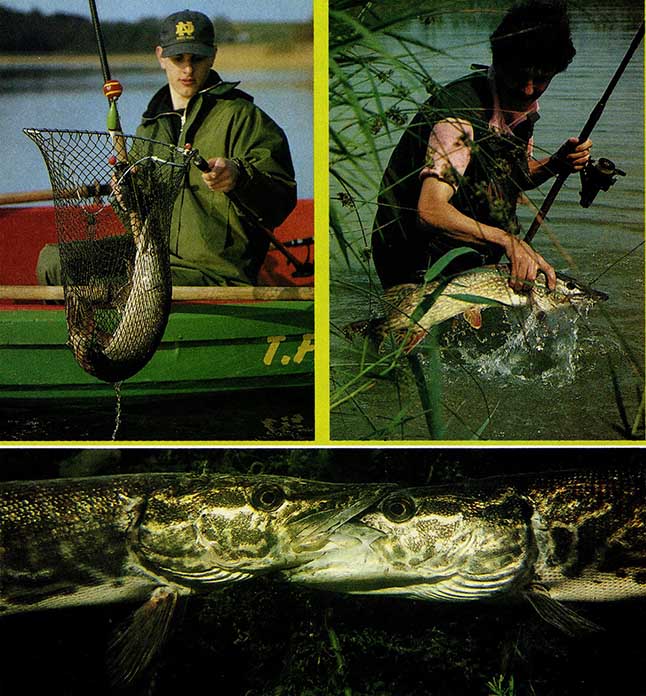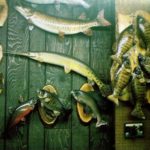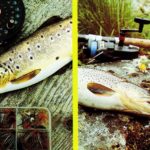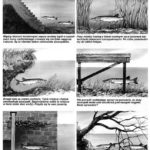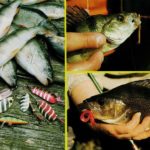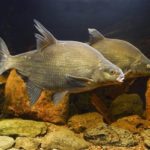Szczupak – Esox lucius
angielski: PIKE
francuski: BROCHET
holenderski: SNOEK
duński: GEDDE, GJEDDE
Występowanie
Szczupaki występują prawie we wszystkich naszych łowiskach – rzekach, rowach, stawach, dużych jeziorach oraz słonosłodkiej wodzie morskiej (w pobliżu ujść rzek). Drapieżniki te świetnie czują się nawet w wodach krainy pstrąga i lipienia. Klasycznymi łowiskami szczupaków są zarośnięte stawy oraz dzikie, okresowo zalewane starorzecza. Na branie dużego szczupaka można liczyć także w małych jeziorach powyrobiskowych oraz w dużych rzekach i jeziorach.
Wielkość Średnie rozmiary: 45-65 cm;
Rekordowy okaz: ponad 1 m (8 kg).
Aktualny rekord: 24,10 kg 130,0 m Marian Powlaczuk 1970
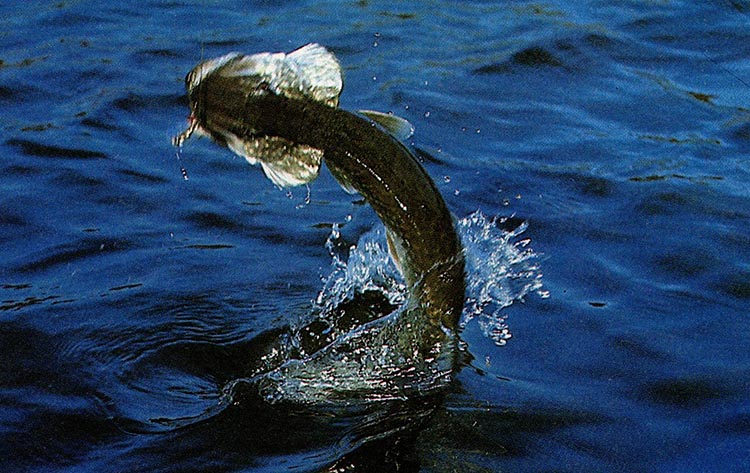 Szczupaki często wyskakują podczas holu nad wodę. Otwierają przy tym pysk, szeroko rozchylają pokrywy skrzelowe i trzęsąc łbem próbują pozbyć się przynęty. Aby zapobiec wyskokom szczupaka należy trzymać szczytówkę wędziska do dołu. Czasami wskazane jest nawet zanurzenie szczytówki w wodzie. Holowany drapieżnik rzadko decyduje się na powietrzne akrobacje, jeżeli hamulec kołowrotka jest lekko nastawiony. Szczupak, który może wyciągać żyłkę prawie zawsze walczy w pobliżu dna.
Szczupaki często wyskakują podczas holu nad wodę. Otwierają przy tym pysk, szeroko rozchylają pokrywy skrzelowe i trzęsąc łbem próbują pozbyć się przynęty. Aby zapobiec wyskokom szczupaka należy trzymać szczytówkę wędziska do dołu. Czasami wskazane jest nawet zanurzenie szczytówki w wodzie. Holowany drapieżnik rzadko decyduje się na powietrzne akrobacje, jeżeli hamulec kołowrotka jest lekko nastawiony. Szczupak, który może wyciągać żyłkę prawie zawsze walczy w pobliżu dna.
Gdzie i kiedy
Zlokalizowanie szczupaka raczej nie jest trudne. Wystarczy tylko trochę porozglądać się za drobnicą. Drapieżniki te zawsze stoją w pobliżu miejsc, w których gromadzą się małe białe ryby.
Szczupaki najchętniej polują z ukrycia. Typowe stanowiska łowieckie tych ryb znajdują się pod liśćmi grążeli, wśród gałęzi zatopionych drzew, a czasami nawet pod pomostami lub kadłubami przycumowanych na dłużej jachtów.
Poza tym szczupaki preferują miejsca, w których nagle zmienia się ukształtowanie dna. Dobre łowiska znajdują się więc u podnóża okoniowych górek, w głębszych dołkach lub na zdecydowanie opadających spadach brzegowych. Na stosunkowo małej powierzchni, powiedzmy w pobliżu małej okoniowej górki, udaje się czasami złowić w kilku rzutach dwa lub trzy średniej wielkości szczupaki.
Duże osobniki są jednak typowymi samotnikami. Mają ściśle wyznaczone rewiry łowieckie i nie tolerują w swym bezpośrednim sąsiedztwie żadnego innego mniejszego szczupaka. W żołądkach dużych szczupaków bardzo często znajdowano już młodsze osobniki tego samego gatunku.
W wielu jeziorach piękne szczupaki stoją i przemieszczają się tylko w toni wodnej. Ze względu na swe pokaźne rozmiary nie mają żadnych naturalnych wrogów i nie muszą już polować z ukrycia.
Legendarne wręcz są wysmukłe szczupaki sielawowce, ryby o masie ponad 10 kg, ciągle podążające w toni wodnej za ławicami sielawy. Najintensywniejsze żerowanie, kiedy szczupaki zjadają połowę swojego rocznego zapotrzebowania pokarmowego przypada na wiosnę.
Wielkie polowanie zaczyna się zaraz po tarle (przeważnie w kwietniu) i trwa do połowy czerwca. W pełni lata drapieżnikom tym raczej nie dopisuje apetyt.
Pod koniec września, wraz z pierwszymi przymrozkami, szczupaki zaczynają bardzo intensywnie żerować, aby zgromadzić niezbędną ilość energii przed zbliżającą się zimą.
Szczytowym okresem dobrego żerowania jest październik. Jesienią szczupaki najlepiej żerują w ciepłe dni, gdy delikatna poranna mgła długo utrzymuje się nad wodą.
W listopadzie także można liczyć na udany połów.
W grudniu natomiast jest to już znacznie trudniejsze – wraz z ochładzaniem się wody szczupaki stają się odrętwiałe i czasami przez wiele dni nie przyjmują żadnego pokarmu. Jedynie w samo południe, gdy blade zimowe słońce wyjrzy zza ciężkich zimowych chmur, cętkowane drapieżniki ożywiają się na krótko.
